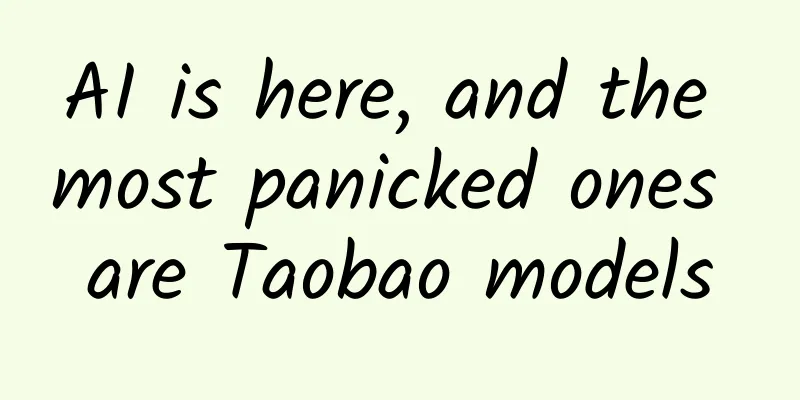Yu'ebao shrinks, Inner Mongolia Junzheng and Ant Financial's equity dispute has come to a conclusion

|
Inner Mongolia Junzheng, which once fought with Ant Financial over the equity of Tianhong Fund, released its 2015 semi-annual report yesterday, which announced the profit of Tianhong Fund in the first half of the year. From the data, although Tianhong Fund's overall profit in the first half of the year is close to that of the whole of last year, another data is worrying. The scale of Tianhong Fund's main product Yu'ebao shrank significantly in the second quarter. According to the data disclosed by Inner Mongolia Junzheng, Tianhong Fund, in which it holds a 15.6% stake, had a main business income of 2.6 billion yuan and a net profit of 617 million yuan in the first half of the year, while last year's main business income was 3.692 billion yuan and a net profit of 632 million yuan. In other words, Tianhong Fund's income in the first half of this year has reached 70% of last year's full-year income, and its net profit is close to last year's full-year income. "Currently, the Tianhong Fund, Wuhai Bank and Guodu Securities in which we hold shares have brought considerable investment income to the company." Inner Mongolia Junzheng said. And from the profit of each company in which it holds shares, the net profit of Tianhong Fund is the first to bear the brunt. In fact, according to the fund company size rankings released by the Asset Management Association of China on Monday, as of the end of June, Tianhong Fund managed 33 funds with a total size of 668.5 billion yuan, ranking first among 100 public fund management institutions. However, Tianhong Fund, which still ranks first in the fund industry, is not without hidden worries: the net value of Tianhong Fund's main product Yu'ebao shrank significantly in the second quarter. According to data from Tianhong Fund's official website, Yu'e Bao's net fund value was 613.38 billion yuan in the second quarter. However, this figure has shrunk by nearly 100 billion yuan compared with the scale of 711.7 billion yuan at the end of the first quarter, a decrease of 13.8%. Industry insiders believe that the decline in the yield of Yu'ebao is one of the important reasons for the shrinking scale of Yu'ebao. In fact, since June this year, the yield of Yu'ebao has been declining and has fallen into the 3% range. As of June 30, the seven-day annualized yield of Yu'ebao has dropped to 3.483%. However, some analysts also pointed out that due to the hot stock market in the second quarter, the relocation of funds was also one of the factors that led to the sharp decline in the scale of Yu'ebao. In addition, Inner Mongolia Junzheng also stated in the announcement that the previous dispute between it and Ant Financial regarding the equity of Tianhong Fund has also been concluded. The capital increase and share expansion was approved by the China Securities Regulatory Commission in May 2014, and the relevant industrial and commercial change registration procedures were completed on February 16, 2015. After the completion of this capital increase and share expansion, the registered capital of Tianhong Fund increased from 180 million yuan to 514.3 million yuan, and the company holds 15.6% of its equity. Previously, Inner Mongolia Junzheng and Ant Financial reached a framework agreement in 2013, and Ant Financial increased its investment in Tianhong Fund. But later, the two sides were in dispute over the contract. ■Related News Investors have become more rational about Internet finance Beijing Morning Post (Reporter Jiang Fan) After several years of explosive growth, Internet finance seems to have calmed down. Market research company J.D. Power pointed out in its 2015 China Retail Banking Customer Satisfaction Study report yesterday that Chinese retail customers have become more rational in their investment in Internet financial products and are gradually returning to the banking system. "The emergence of Internet finance has caused the loyalty of many bank customers to decline. Banks must be more innovative to attract customers." J.P. Morgan researchers said, but it must be noted that with the decline in the yield of Internet financial products and concerns about security, many Internet finance investors have gradually returned to banks and believe that the bank's wealth management products can meet their investment needs. In fact, facing the increasingly fierce competition from peers and across industries, the banking industry has made great progress in service. According to J.P. Morgan data, the average customer satisfaction score of retail banks in 2015 was 787 points, a significant improvement from 703 points in 2009. "However, 53% of bank customers still have to wait in line for more than 10 minutes, which is similar to the situation in 2009." J.P. Morgan analysts believe that the service level of the banking industry is mixed. J.D. Power also made suggestions for improving the service level of the banking industry, believing that banks should not only establish and improve a customer service model with multiple channels and touch points, provide target groups with richer product lines and achieve efficient cross-selling, but also do a good job in protecting the rights and interests of financial consumers, which is also an effective way to improve customer satisfaction. As a winner of Toutiao's Qingyun Plan and Baijiahao's Bai+ Plan, the 2019 Baidu Digital Author of the Year, the Baijiahao's Most Popular Author in the Technology Field, the 2019 Sogou Technology and Culture Author, and the 2021 Baijiahao Quarterly Influential Creator, he has won many awards, including the 2013 Sohu Best Industry Media Person, the 2015 China New Media Entrepreneurship Competition Beijing Third Place, the 2015 Guangmang Experience Award, the 2015 China New Media Entrepreneurship Competition Finals Third Place, and the 2018 Baidu Dynamic Annual Powerful Celebrity. |
<<: Loup Ventures: The global industrial robot market is expected to reach US$33.8 billion by 2025
>>: Accenture: 2017 Medical Internet of Things Report
Recommend
The 4 core elements of Internet activity operation and promotion!
Recently, a friend talked to me about issues rela...
U.S. hospitals are overcrowded! Be sure to pay attention to this respiratory infection in winter!
Just after the beginning of winter, the chill in ...
Chen Longyu - 10 Lectures on the Difficult Hexagrams of King Wen's Sacred Hexagrams
Chen Longyu - 10 Lectures on Difficult Hexagrams ...
Ten ways to promote online marketing
As a business that wants to create value and weal...
SMMT: UK new car registrations fell by about 25% year-on-year in October 2021
Preliminary data released by the Society of Motor...
Why is it that no one is interested in the product even though we have exhausted all kinds of marketing methods?
I have learned all kinds of clever marketing tech...
Miluo SEO training: e-commerce website promotion and optimization strategy
For the current lifestyle, online shopping has be...
Operations: Where is the entry point to find accurate users? ?
one. Definition and classification of users 1. De...
Marketing promotion: This is how you can leverage marketing hotspots in March!
Whether it is new media, marketing, event plannin...
The Information: ChatGPT’s paid users exceed 20 million, revenue surges 30%
Recently, according to The Information, ChatGPT, ...
The latest movie ticket project in 2021, triple explosive gameplay helps you earn more than 100,000 yuan a month
Dongguan SEO Feng Chao recommends the Internet en...
An iOS super app with billions of users, with 10 years of code changes, have you noticed?
By Dustin Shahidehpour Planning | Yan Zheng Faceb...
How to build a product operation strategy? Just 3 steps!
Recently, I have seen many articles online that d...
Lezi's "Practical Course on Making Money with Tik Tok Short Videos"
A practical course on making money with short vid...









